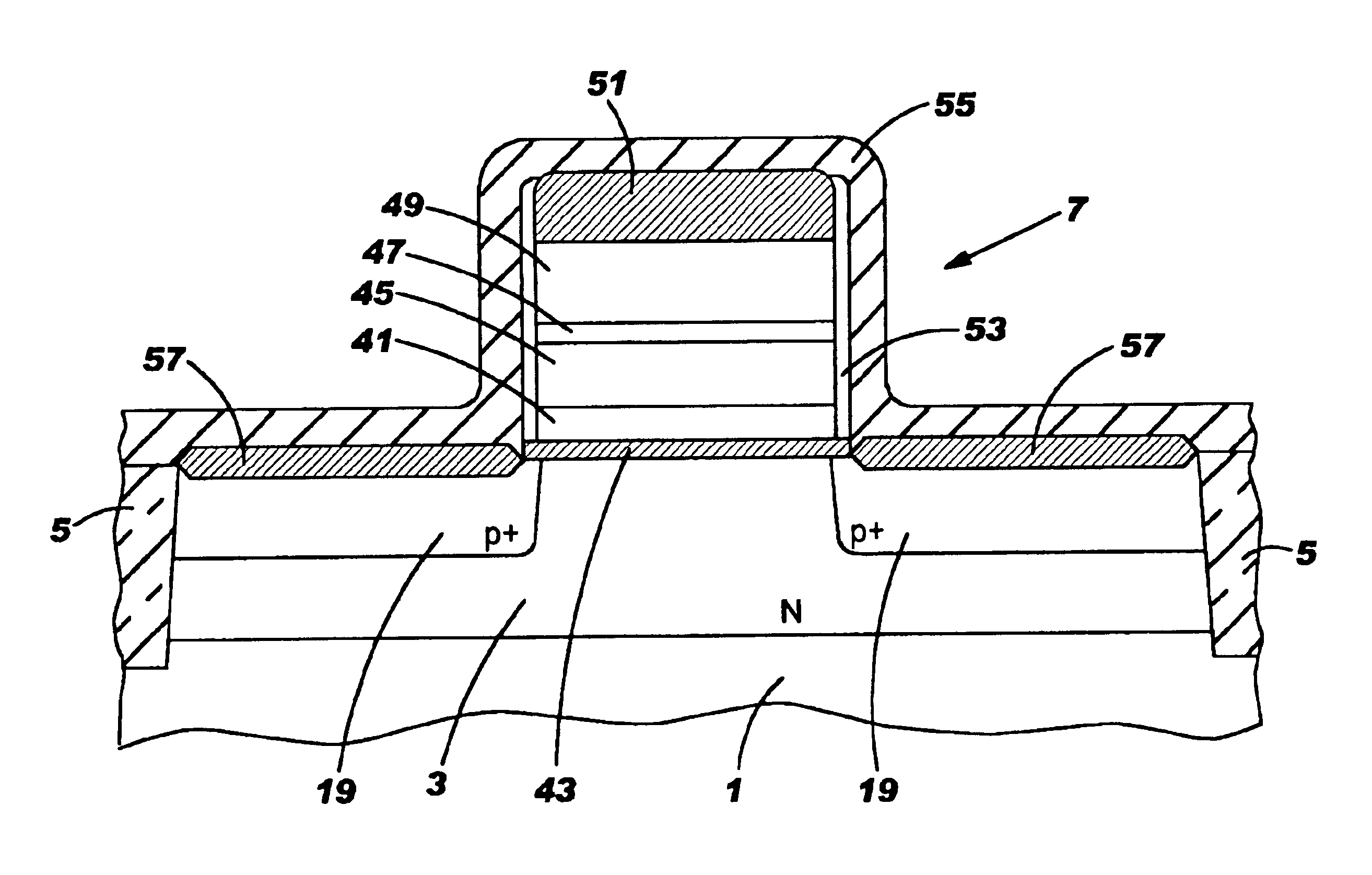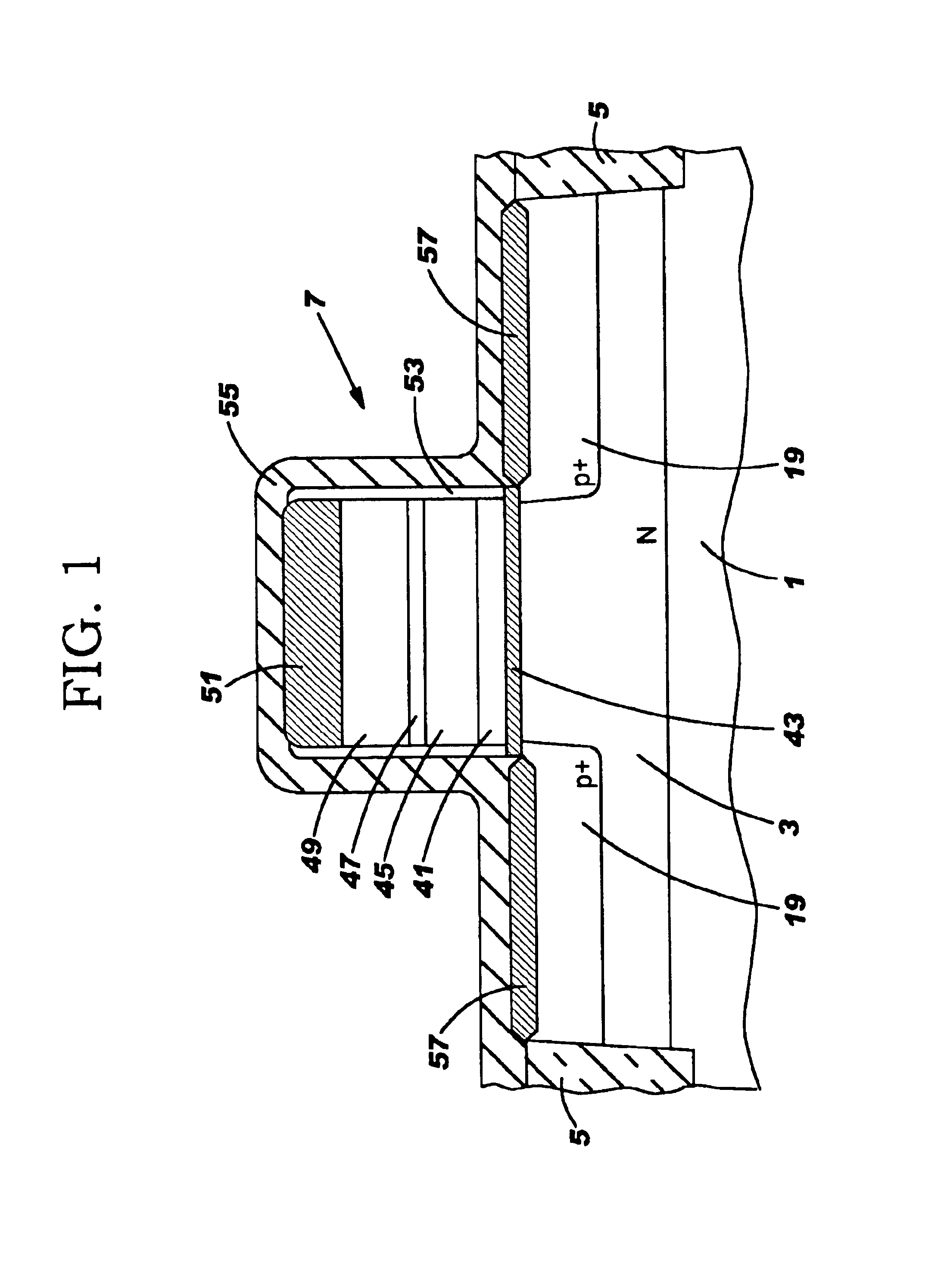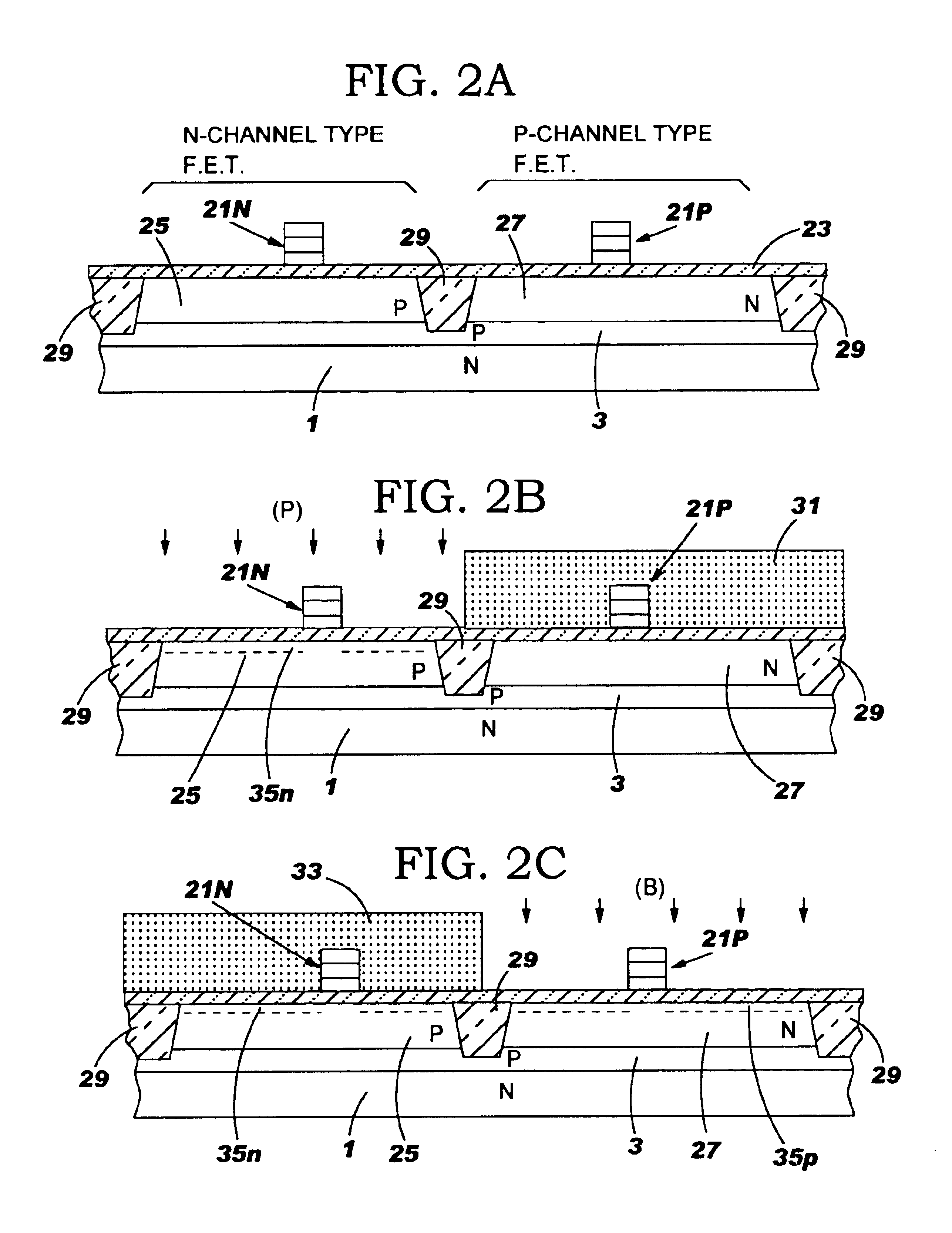Split poly-SiGe/poly-Si alloy gate stack
a poly-sige alloy and gate stack technology, applied in the direction of transistors, electrical devices, semiconductor devices, etc., can solve the problems of very difficult to adjust the thermal energy required for activation of dopant impurities, small and small gate electrodes, and a very thin gate insulating layer, etc., to achieve enhanced boron diffusion and boron activation, and good cosi2 formation
- Summary
- Abstract
- Description
- Claims
- Application Information
AI Technical Summary
Benefits of technology
Problems solved by technology
Method used
Image
Examples
Embodiment Construction
[0022]With reference to FIG. 1, there is shown a cross-section of a pFET with a gate stack structure, as provided in accordance with the present invention. Other than the gate stack structure, the arrangement is a conventional configuration, as is understood by those skilled in the art, and represents only a portion of an integrated circuit structure wherein other pFETs and complementary nFETs may be fabricated on the same substrate. The pFET shown would typically be fabricated on p-type silicon (Si) substrate material (not shown) with p-type expitarial layer 1 formed thereon. A p-type dopant impurity is typically ion implanted into this selected region and an n-type well 3 is formed in the epitaxial layer 1. An nFET on this same substrate would be formed by masking the pFET region with a photoresist, for example, and then ion implanting on an n-type dopant into the nFET region. Shallow trench isolating regions 5 are formed which define the active region. An oxide layer 43 is then f...
PUM
| Property | Measurement | Unit |
|---|---|---|
| diameter | aaaaa | aaaaa |
| grain size | aaaaa | aaaaa |
| thickness | aaaaa | aaaaa |
Abstract
Description
Claims
Application Information
 Login to View More
Login to View More - R&D
- Intellectual Property
- Life Sciences
- Materials
- Tech Scout
- Unparalleled Data Quality
- Higher Quality Content
- 60% Fewer Hallucinations
Browse by: Latest US Patents, China's latest patents, Technical Efficacy Thesaurus, Application Domain, Technology Topic, Popular Technical Reports.
© 2025 PatSnap. All rights reserved.Legal|Privacy policy|Modern Slavery Act Transparency Statement|Sitemap|About US| Contact US: help@patsnap.com



